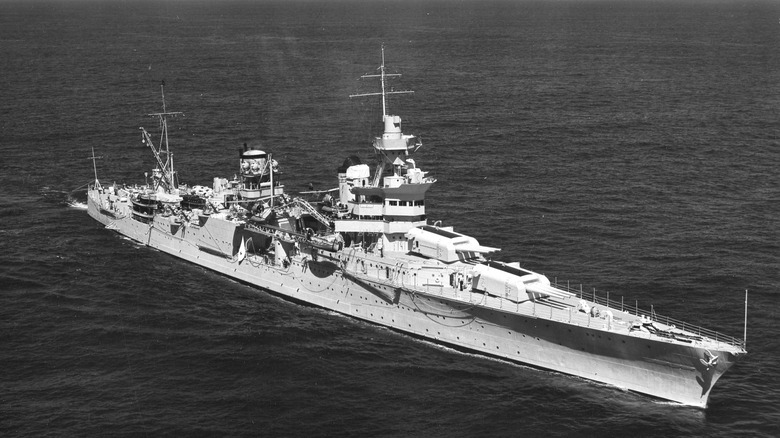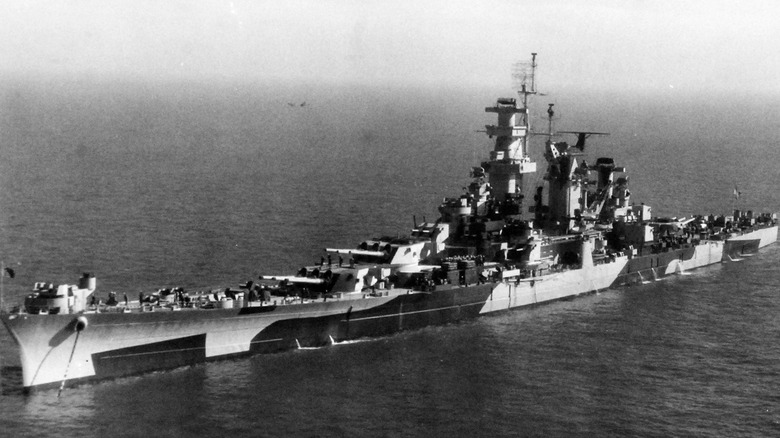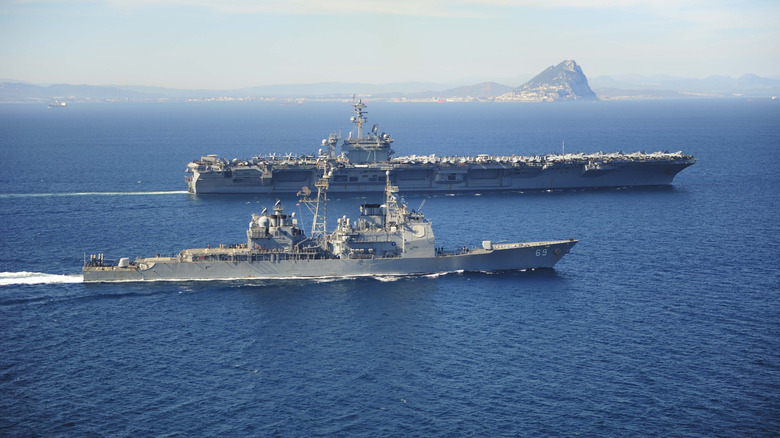What Was The Cruiser's Role Among Military Ships During World War 2?
The high seas were dangerous places during World War II, an unforgiving expanse where nations vied for supremacy, just as they fought each other on land and in the skies. Military ships of all types and classes patrolled endlessly, engaging in various war missions.
Among the diverse fleet, cruisers occupied a distinct position, bridging the gap between the heavily armed battleships and aircraft carriers, and the lighter, faster destroyers. Cruisers are often overlooked in the popular accounts of famous naval battles, however, these vessels were versatile workhorses that played a pivotal role during the global conflict that played out over vast bodies of water.
Cruisers took on a wide variety of missions within a naval battle group. They often served as escorts for the aircraft carriers. Battleships packed formidable firepower, but their mass meant they often struggled to keep up with the carriers. Destroyers were faster but lacked enough power and could not take as much punishment as cruisers.
They were also deployed as reconnaissance platforms. Cruisers scouted the seas, sometimes well ahead of the main body of the fleet, sniffing for threats and pinpointing enemy positions. Cruisers were armed with a variety of weapons, guns of various calibers, that allowed them to actively hunt and engage other ships and aircraft. They even took part in heavy shore bombardments. For example, the Baltimore-class heavy cruisers were armed with up to 40 guns for their main battery and anti-aircraft defense. Some, like the Japanese Kuma-class light cruisers, were modified to carry torpedo tubes for anti-submarine missions.
A few notable cruisers from World War II
British cruisers, HMS Norfolk and HMS Dorsetshire, were part of the British battlegroup that actively hunted and eventually sank the German flagship, the Bismarck. The Bismarck was one of the largest battleships deployed during the war, and its sinking was a great morale booster for the British Navy.
The U-boats were arguably the most notorious German vessels, sending about 3,000 Allied ships to the sea floor. However, the Germans also fielded cruisers for some of their naval campaigns. An example is the Königsberg, a German cruiser that supported landing troops during the invasion of Norway. It was crippled during the attack and eventually sunk by British planes, becoming the first naval vessel in history to be sunk by an air attack in wartime.
Another German cruiser, Prinz Eugen, was part of Bismarck's battlegroup when it sank HMS Hood, a Royal Navy battlecruiser. Shortly after, it was attacked by the British Navy as it tried to escape alongside the Bismarck. The heavy cruiser survived the attack and was the largest warship surrendered by the Germans to the Allies after the war.
The American Alaska-class cruisers were among the largest cruisers deployed during World War II — so big that it has been debated whether they should be regarded as cruisers or actually battlecruisers. They were initially designed in response to rumors that the Japanese were designing new cruisers that could outperform all current cruisers in the American fleet. The Alaska-class cruisers had a 29,771-ton displacement and reached a length of 246 meters (808 feet). They were equipped with nine powerful 12-inch main guns and could travel at a top speed of 33.6 knots (38 mph). The rumored Japanese cruisers never materialized, but the Americans did complete two Alaska-class cruisers, the USS Alaska and USS Guam, that saw active service before the end of the war.
The evolution of cruisers from the World War II era to today
Bristling with guns, World War II cruisers were potent surface combatants, ready to take the fight to the enemy. However, rapid advancement in fighter jets and other aerial threats quickly rendered traditional gun cruisers increasingly vulnerable and obsolete.
After the war, the U.S. converted two of its Baltimore-class cruisers into Boston-class guided missile cruisers, the first of their kind in the world, marking the U.S. Navy's foray into the era of guided-missile cruisers. The refitting involved extensive modifications, such as removing the aft gun turret and replacing it with Terrier anti-aircraft guided missile launchers.
Today, cruisers have transformed into highly sophisticated multi-mission naval platforms. No longer reliant solely on guns, these vessels now integrate sophisticated missile systems and advanced sensor technology, enabling them to excel in anti-air, anti-submarine, and land-attack roles.
Some cruisers, like the Ticonderoga-class ships, are even fitted with the Aegis ballistic missile defense system and long-range strike capabilities, employing weapons like Tomahawk cruise missiles. The roles of cruisers have also expanded to include command-and-control functions now that they can be effectively deployed as flagships.


